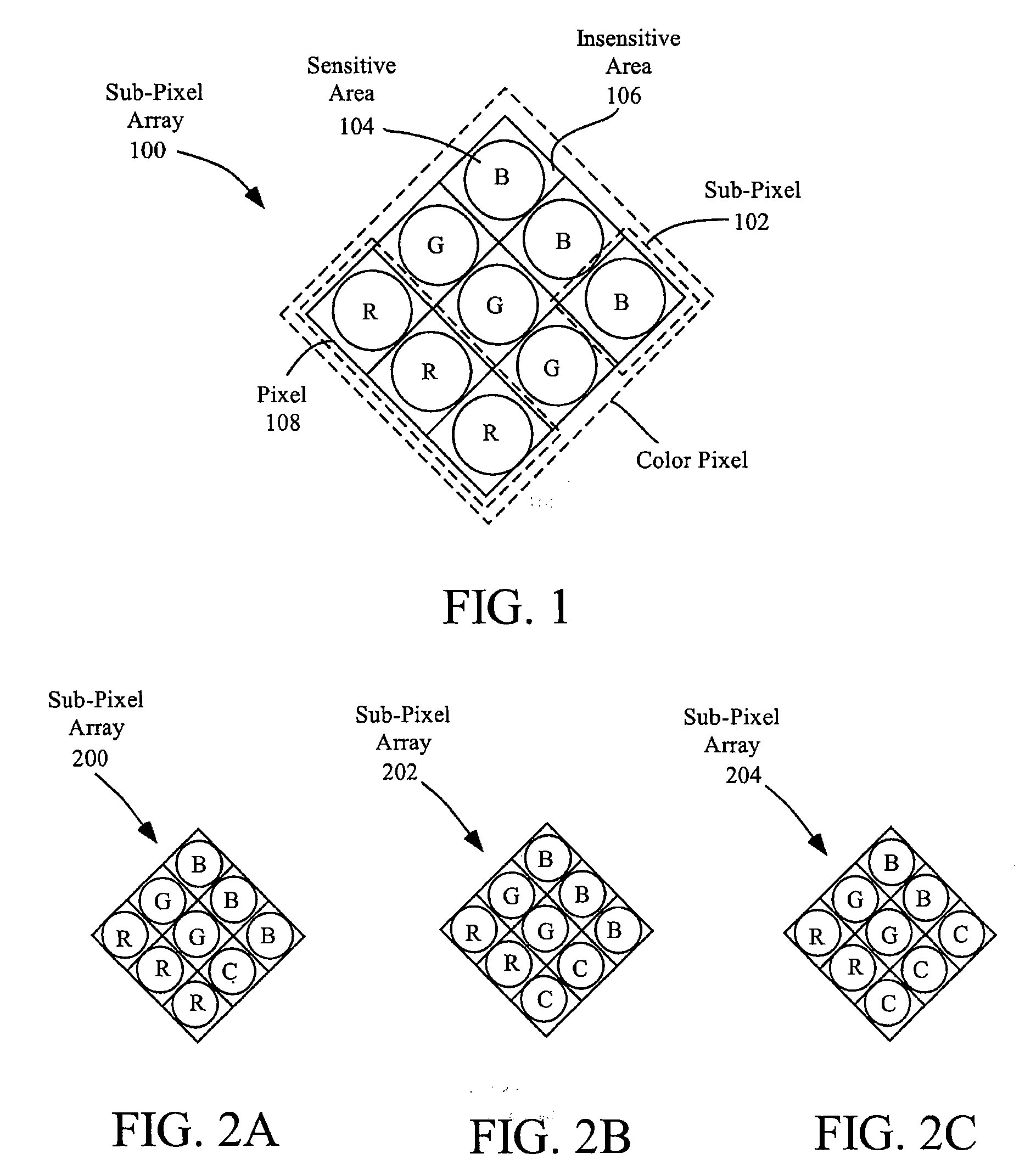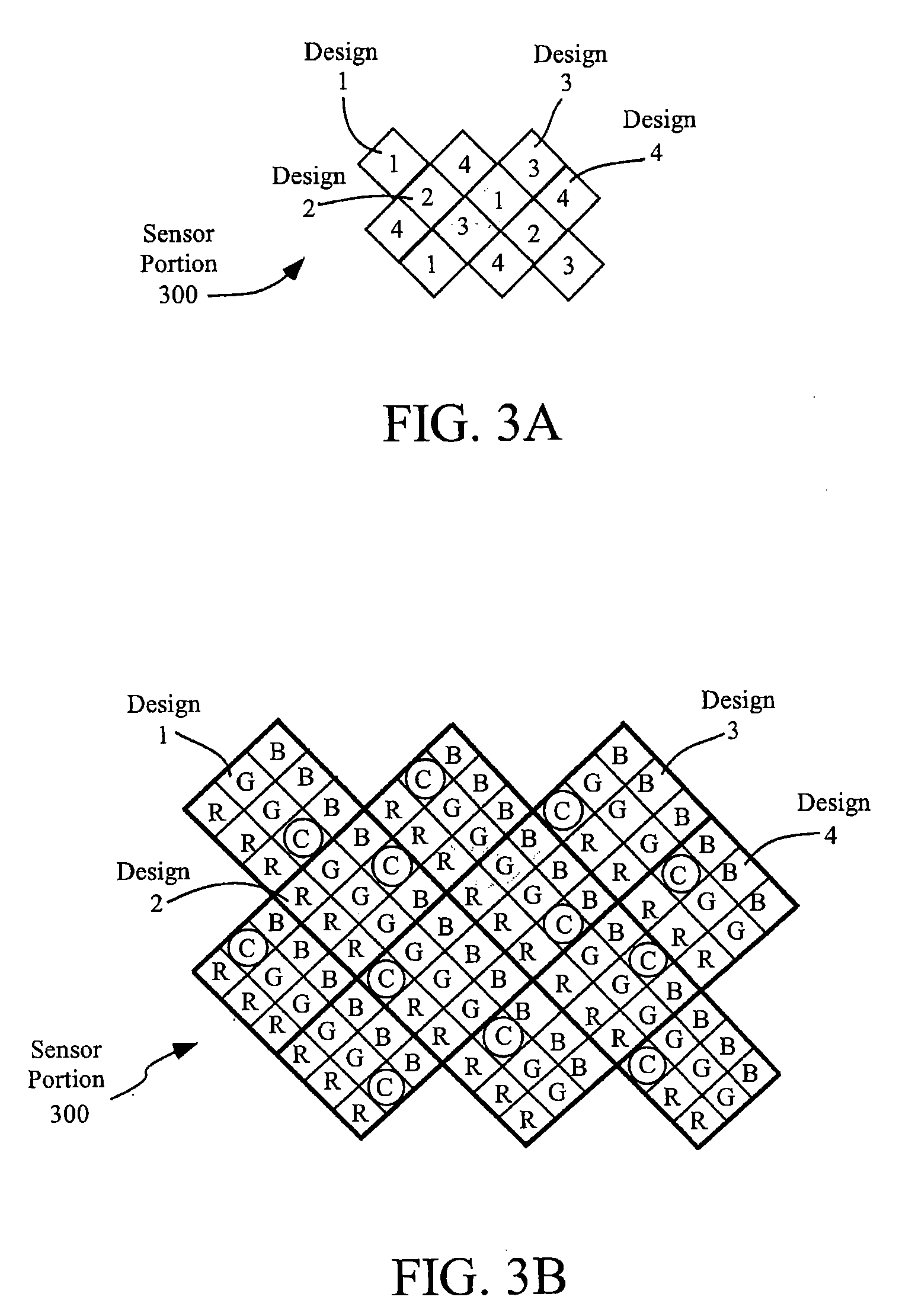Sub-Pixel Array Optical Sensor
a sub-pixel array and optical sensor technology, applied in the direction of color signal processing circuits, television systems, television system scanning details, etc., can solve the problem of not being able to meet the definition of sensors without linear response, and achieve the effect of improving the dynamic range of captured images, improving visual resolution and color purity, and increasing exposure level
- Summary
- Abstract
- Description
- Claims
- Application Information
AI Technical Summary
Benefits of technology
Problems solved by technology
Method used
Image
Examples
Embodiment Construction
[0014]In the following description of preferred embodiments, reference is made to the accompanying drawings which form a part hereof, and in which it is shown by way of illustration specific embodiments in which the invention can be practiced. It is to be understood that other embodiments can be used and structural changes can be made without departing from the scope of the embodiments of this invention.
[0015]Embodiments of the invention can improve the dynamic range of captured images by using sub-pixel arrays to capture light at different exposures and generate color pixel outputs for an image in a single frame. The sub-pixel arrays utilize supersampling and are generally directed towards high-end, high resolution sensors and cameras. Each sub-pixel array can include multiple sub-pixels. The sub-pixels that make up a sub-pixel array can include red (R) sub-pixels, green (G) sub-pixels, blue (B) sub-pixels, and in some embodiments, clear sub-pixels. Each color sub-pixel can be cove...
PUM
 Login to View More
Login to View More Abstract
Description
Claims
Application Information
 Login to View More
Login to View More - R&D
- Intellectual Property
- Life Sciences
- Materials
- Tech Scout
- Unparalleled Data Quality
- Higher Quality Content
- 60% Fewer Hallucinations
Browse by: Latest US Patents, China's latest patents, Technical Efficacy Thesaurus, Application Domain, Technology Topic, Popular Technical Reports.
© 2025 PatSnap. All rights reserved.Legal|Privacy policy|Modern Slavery Act Transparency Statement|Sitemap|About US| Contact US: help@patsnap.com



